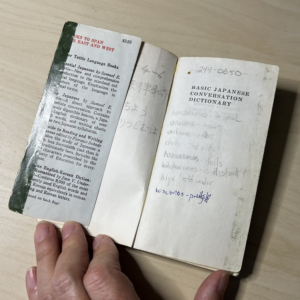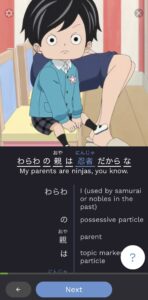@jaremfan (Boon Yew Chew) referred me to this paper. I had a little trouble processing the information because of the dense academic language, however it seems that the authors recommend “practice led research” (PLR) to transform the “seemingly inherent and natural acts found in casual practice into the formal arrangement of accepted truths and regulated practices of a discipline for user experience design (UXD) and information architecture (IA) communities of practice.”
Hobbs, Fenn and Resmini would like to see more rigor applied to the disciplines of UXD and IA.“…this paper presents an examination of the field of user experience design (UXD) in general, and information architecture (IA) in particular. We note that although the field is comprised of numerous fields and communities of practice and that it benefits from the theoretical inheritance of related disciplines (it is multi-disciplinary in nature) collectively it lacks the benefits associated with an institutionalized discipline of its own. They are concerned that “... the present community of practice is characterized by an abundance of know-how and opinion, which is in fact a threat, and a disservice to the larger benefit experienced as a result of applying UXD.”
The author’s opinion is that in order to mature, the practice of UXD must become more formalized. “Through an exploration (and some definition) of practice and discipline we come to understand the benefits to be gained from maturing the community of practice of UXD to that of an institutionalized discipline. Scholarly research and the creation of scientifically validated knowledge is a key element in this process of maturation.”
To accomplish this, the authors recommend that designers take more responsibility for rigor in their work and adapt design methods to “identify and explicate knowledge, theories and practices.” They want us to bring our dialog within academic channels, instead of the Web (newsgroups, blogs, etc.) They believe there is an opportunity to create a structure of scientific validity around design practices that can benefit the both the design profession and the individual work of designers.
There were several aspects of the paper that I found helpful/interesting:
- There’s a good overview of the UXD/IA space, including a diagram of Morville’s “Big Architect, Little Architect” view of information architecture and related fields and Boersma’s T-model of user experience.
- There’s some good background on Communities of Practice (COP) and an interesting thought about how they evolve.
“A community of practice (COP) is usually a group of people who are united by their interest in a particular field of knowledge. …COP’s are natural and powerful resources for learning and knowledge (Verna, 2000:4) and take place in reference to the “real execution of work” (Brown, in Verna, 2000:4). According to Etienne Wenger, communities of practice:
- are nodes for the exchange and interpretation of information (2008: 5);
- are fundamentally self- organizing systems. (2008: 3);
- reflect the member’s own understanding of what is important and what their practice is about. They are organised around what matters to members as opposed to business interests. (2008: 4);
- are mostly informal (2008: 3);
- exist within businesses, across business units and across organisational boundaries. (2008: 4);
- are areas of knowledge as opposed to particular tasks; they have an identity and facilitate a shared practice and collective learning. (2008: 3);
- can retain knowledge tacitly and explicitly and steward competencies, (2008: 6);
- exist in a number of stages. (2008: 3).
The authors believe that the current state of UXD practice is on the verge of moving from casual (practice-led) to a more formal professional discipline, although I feel they are somewhat disparaging about the activities they mention.
“In UXD, a move from casual practice towards institutionalization has emerged in recent years. Examples of this shift include the establishment of the Information Architecture Institute (IAI) and the Interaction Design Association (IxDA). Published thought leaders exist, although remarkably a number of them do not self-identify as either information architects or user experience designers. Specialist publishers like O’Reilly and Rosenfeld Media are printing for the practice but their offer does not qualify as either academic or scientific. Similarly, a vast body of content, largely available on the World Wide Web and the Internet, provides the practitioner with a literally endless body of know-how for use in design practice, but little of this is of scientific interest, and often dispersed. Perhaps the most significant development of late has been the creation of the peer-reviewed Journal of Information Architecture.”
So, how can this be remedied? The authors suggest that we develop processes by which the intermediate artifacts of the design process can be validated (it’s unclear to me who they are suggesting do this, perhaps by academic researchers?)
“Within newer fields of design practice such as UXD and IA a high proportion of the knowledge is embedded in the artifacts which are the result of the design process. This differs from established fields of practice that contain a strong sense of disciplinary identity such as Law, where a large quantity of the knowledge resides in textual accounts. The codification of the knowledge contained in a field guides practitioners in terms of the expectations and limits of the field.”
Next, the authors discuss how practitioners could partner with researchers (e.g. “practice led research”) to communicate their hypothesis as well as their results.
“In practice-led research (PLR), the artifact has a central position in the academic research process. In PLR, ‘articulation and dissemination of the research findings take place both through the product of making [the artifact] and established means: these are seen as dialogical, interrelated and iterative (Faber, 2009). Practice informs knowledge which reciprocally informs practice.”
“PLR, although variously defined, can be considered to be a ‘self-reflexive’ form of research where:
- the artist / designer / creative practitioner provides a rigorous critical analysis of their work, positioning it within broader contextual / theoretical / historical / discursive research paradigms;
- articulation of the processes involved in making the product of research form an important part of the research findings;
- articulation and dissemination of the research findings takes place both through the product of making and established academic means. These are seen as dialogical and interrelated (Faber, 2009:7).”
As a practical matter, this concept of using PLR to advance the formalization of our practice would require us to overcome some pretty significant obstacles:
- UXD combines elements of graphic design, architecture, anthropology, industrial design, library science, ergonomics and marketing. That’s a pretty big collection of topics to gather into one practice or framework.
- Most UXD and IA practitioners are not used to writing or scholarly articles, or interacting with the academic community.
- There are issues of confidentiality and intellectual property (IP) in much of a designer’s work.
- The objectives of design research and particular design process chosen for a given project (which are now often informal at best) would need to be re-framed to include new objectives to support the academic research element.
The authors have a certain realism about this issue, stating “The kind of self reflective documenting of process as recommended by PLR may very well not extend beyond a project post mortem or case study, if they are created at all, and often these kinds of documents are not part of the act of making but rather after-thoughts queued onto the end of a project.” But they also rather wistfully add, “The space of documenting-while-designing, recording learning’s, feelings, meanings, decisions, measuring effectiveness and documenting contextual factors while on a project could provide a wealth of knowledge for the practicing community and could provide greater validation for the methods, tools and techniques of the field.”
Reflecting on this paper, I am left with a few thoughts:
- I agree that we can learn from more “real world” stories and case studies. I’ve participated in the call to create them, and made my own work available in this format. I think that boiling down our learnings into patterns and proofs is actually counterproductive. We need context to be able to understand and determine the appropriateness of a particular solution to our situation. I’ve yet to find a design pattern library or process diagram that could be used for more than just a starting point for ideas.
- As a person who coaches interaction designers and has taught interaction design practices for many years, I realize that there are many methods to produce good work, different methods work for different people and different situations require different approaches. I am skeptical that we are able to produce a system anything like the legal or scientific system which can be governed by rules, guidelines and absolutes.
- I am more conscious and self-reflective about my process than most designers I know. The times I’ve tried to share what works for me in a professional or academic environment I’ve been stymied by the formality of the process. If the academic community is interested in hearing our voices, how are they reaching out to our communities to create these partnerships for publication?



